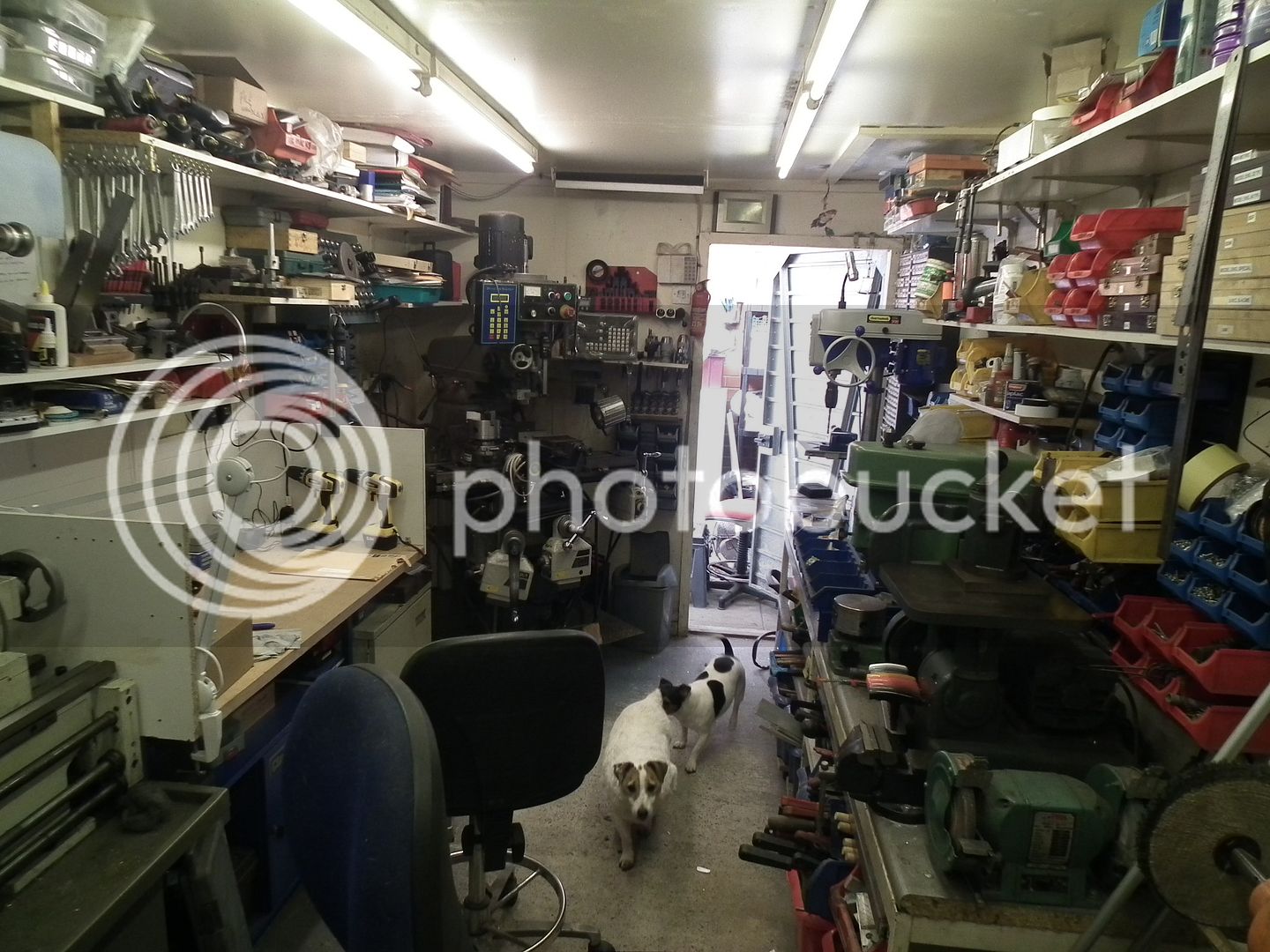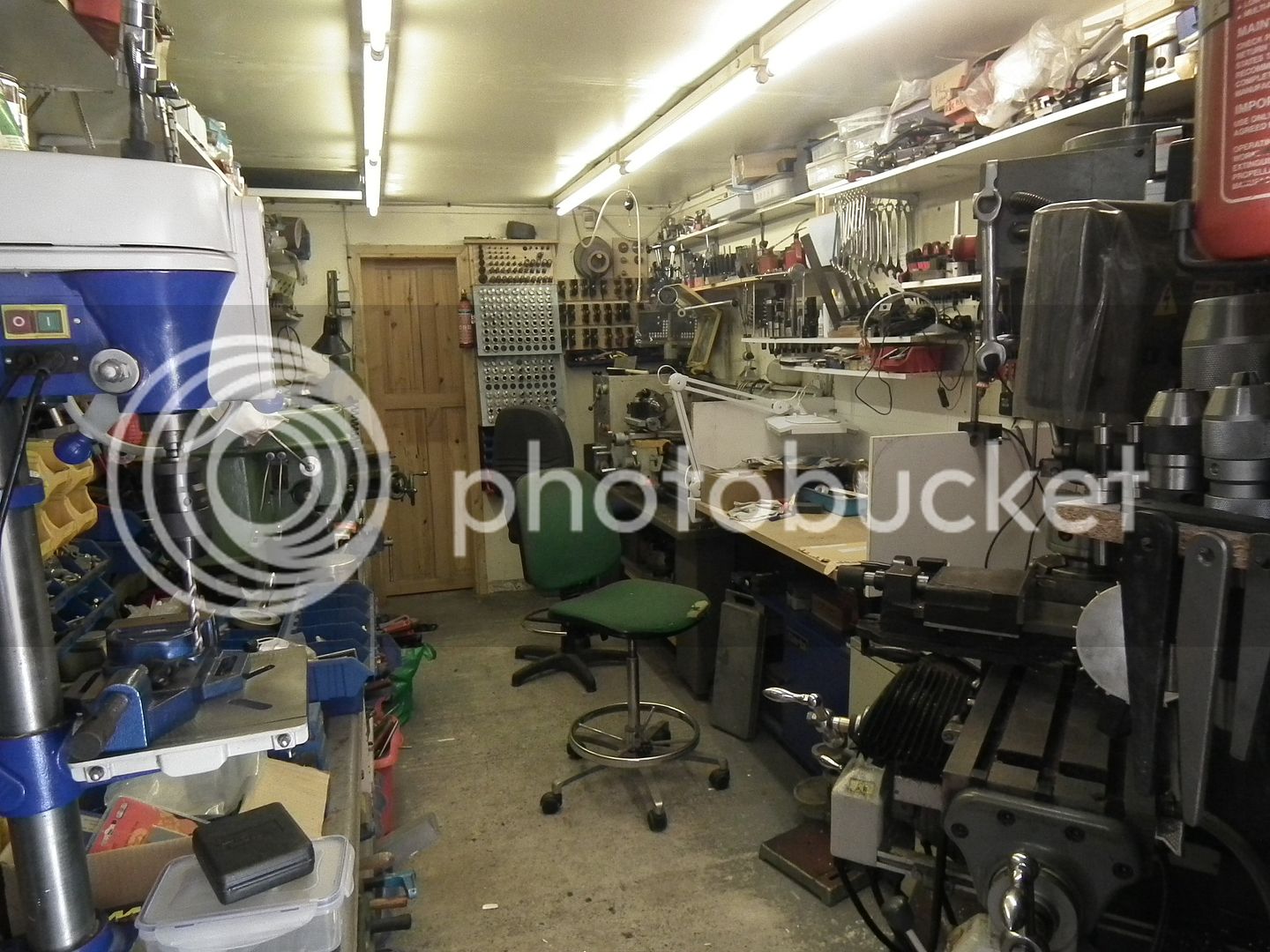TorontoBuilder
John
- Joined
- Jan 4, 2013
- Messages
- 359
- Reaction score
- 84
I finally have shop mostly set up to where I can easily machine parts.
I spent the last two days with my brother getting lathe in order, after nearly ruining a new QCTP base. Our allegedly newly refurbished lathe had such poor bearings it was impossible to obtain a finish that didn't look like an alligator's skin.
We pulled it apart and put it back together tightening things down properly and now are quite happy with the results. So it's not the lathe itself, its the inferior service of our number one supplier in canada.
Now, does anyone know how to keep a 150 lb needy Neapolitan Massif out from underfoot while working in the shop?
I spent the last two days with my brother getting lathe in order, after nearly ruining a new QCTP base. Our allegedly newly refurbished lathe had such poor bearings it was impossible to obtain a finish that didn't look like an alligator's skin.
We pulled it apart and put it back together tightening things down properly and now are quite happy with the results. So it's not the lathe itself, its the inferior service of our number one supplier in canada.
Now, does anyone know how to keep a 150 lb needy Neapolitan Massif out from underfoot while working in the shop?





















